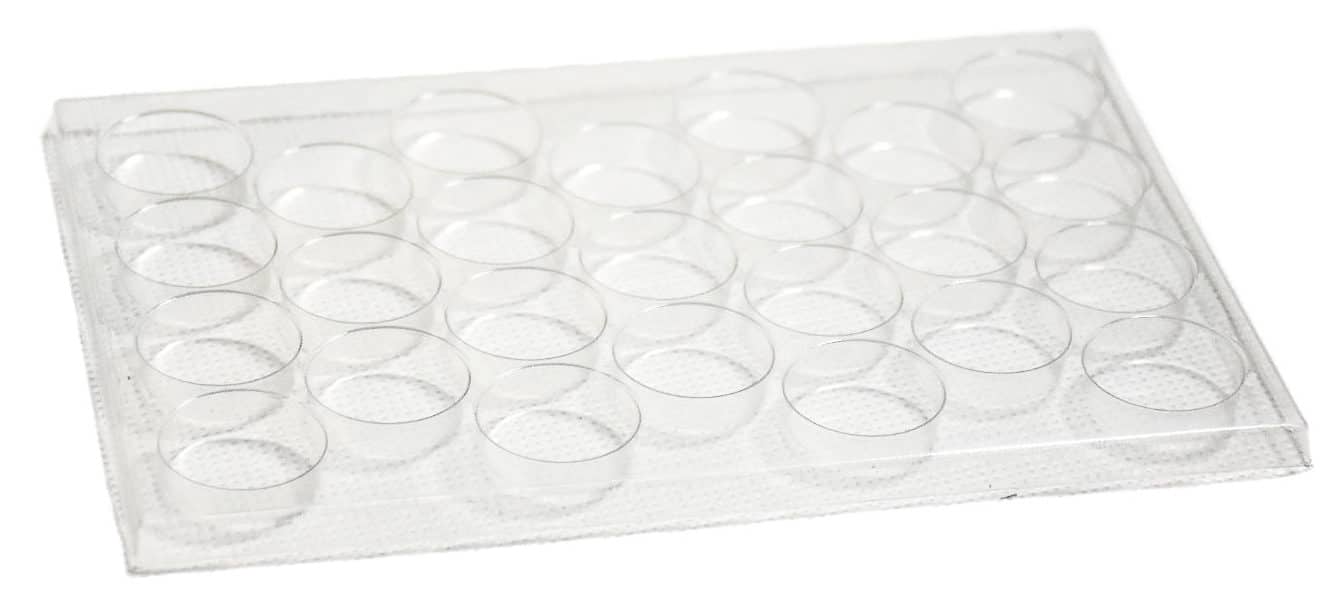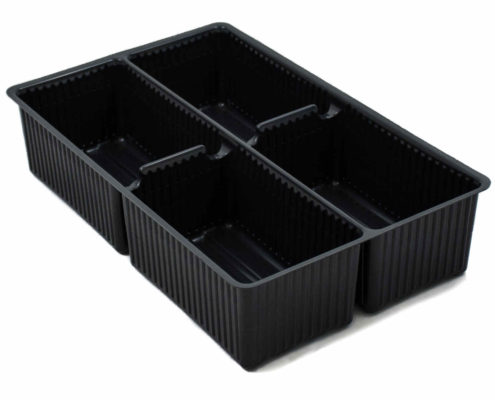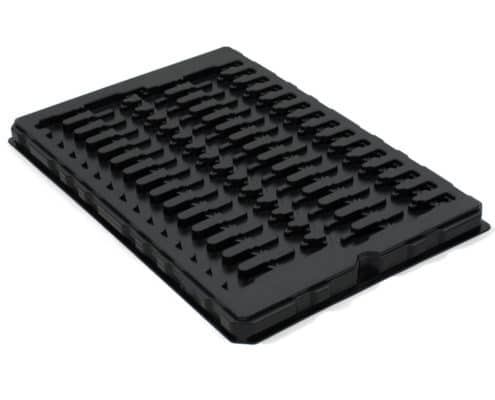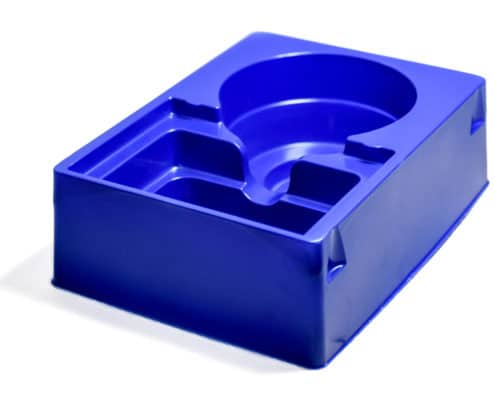Deep drawings, blisters and trays

Precisely fitting contours
Low manufacturing tolerances
There are different names that stands for these products such as workpiece carriers, blisters, sorting inserts, traysor deep-drawn parts. The manufacturing process is the same for each part. During this process, the parts are deep-drawn, in the plastics sector this is known as thermoforming.
The basis for a deep-drawn molded part is a tool that specifies the contour and form. Because of this manufacturing method, thermoforming trays are ideal for larger quantities. Due to the fast manufacturing process, the individual molded parts can be produced in an relatively inexpensively way.
The great advantage of these molded parts is that the contours can be adapted very precisely to the products, which have to be packaged. The trays are also suitable for automated production processes due to the small manufacturing tolerances. As reusable packaging must be cleaned often, Thermoformed parts are the first choice.
Different materials can be used here depending on the requirements. The following raw materials are traditionally used:
- PS (polystyrene)
- ABS (acrylonitrile butadiene styrene)
- PET (polyethylene terephthalate)
- PE (polyethylene)
- PVC (polyvinyl chloride)
Due to the production-related draft angles of the molded parts, they can nest into one another during palletizing, which has a great volume advantage for storage and transport. For stackable trays, therefore also a rotary stacking can be used as the trays can be rotated by 180 ° in order to stack them, and the molded parts are nested into one another to reduce the volume to store the empty goods.



